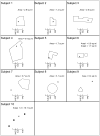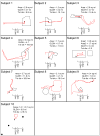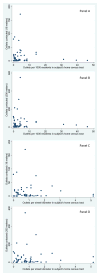Neighborhoods, daily activities, and measuring health risks experienced in urban environments
- PMID: 20980088
- PMCID: PMC2982925
- DOI: 10.1016/j.socscimed.2010.09.008
Neighborhoods, daily activities, and measuring health risks experienced in urban environments
Abstract
Studies of place and health often classify a subject's exposure status according to that which is present in their neighborhood of residence. One's neighborhood is often proxied by designating it to be an administratively defined unit such as census tract, to make analysis feasible. Although it is understood that residential space and actual lived space may not correspond and therefore exposure misclassification may result, few studies have the opportunity to investigate the implications of this issue concretely. A population-based case-control study that is currently underway provides one such opportunity. Adolescent victims of assault in Philadelphia, Pennsylvania, USA, and a control sample of adolescents drawn randomly from the community are being enrolled to study how alcohol consumption and time spent nearby alcohol outlets - individual-level and environmental-level risk factors for violence, respectively - over the course of daily activities relate to the likelihood of being assaulted. Data from a rapport-building exercise consist of hand-drawn sketches that subjects drew on street maps when asked to indicate the area considered their neighborhood. The main data consist of self-reported, detailed paths of the routes adolescents traveled from one location to the next over the course of one full day. Having noticed interesting patterns as the data collection phase proceeds, we present here an analysis conducted with the data of 55 control subjects between 15 and 19 years old. We found that hand-drawn neighborhoods and activity paths did not correspond to census tract boundaries, and time subjects spent in close proximity to alcohol outlets during their daily activities was not correlated with the prevalence of alcohol outlets in the census tract of their residence. This served as a useful example demonstrating how classifying subjects as exposed based solely on the prevalence of the exposure in the geographic area of their residence may misrepresent the exposure that is etiologically meaningful.
Copyright © 2010 Elsevier Ltd. All rights reserved.
Figures



References
-
- Anderson E. The social ecology of youth violence. Crime & Justice. 1998;24:65–104.
-
- Anderson E. Code of the street: decency, violence, and the moral life of the inner city. New York, NY: W. W. Norton; 1999. pp. 1–352.
-
- Aneshensel CS, Sucoff CA. The neighborhood context of adolescent mental health. J Health Soc Behav. 1996;37(4):293–310. - PubMed
-
- Armstrong BK, White E, Saracci R. Principles of exposure measurement in epidemiology. Oxford, UK: Oxford University Press; 1992. p. 12.
-
- Barker RG, Wright HF. One boy’s day: a specimen record of behavior. New York, NY: Harper & Brothers; 1951.
Publication types
MeSH terms
Grants and funding
LinkOut - more resources
Full Text Sources
Medical

